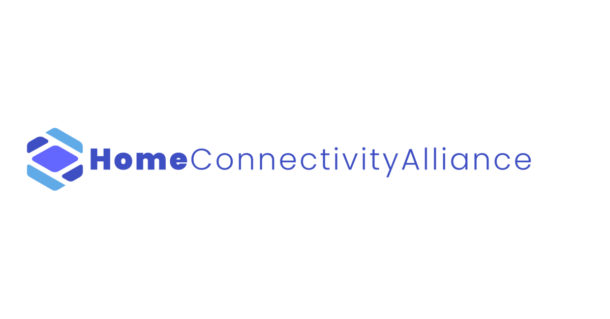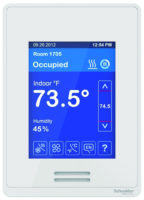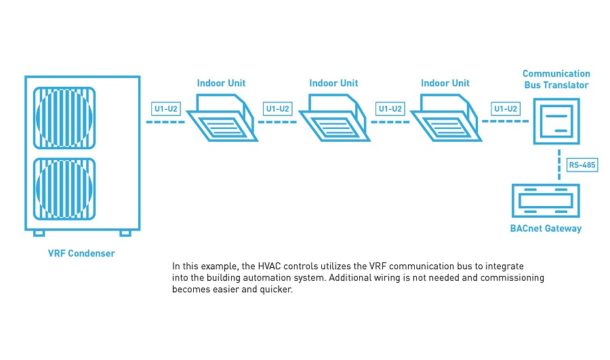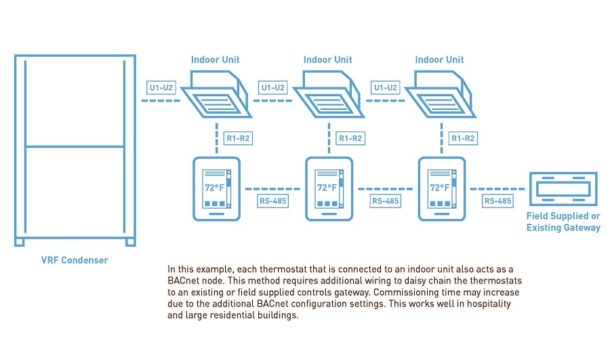Organization aims to foster innovation and provide consumers with safer, simpler and more interoperable options for HVAC and other long-life appliances and systems in their connected home ecosystem Trane Residential (Trane) and American Standard Heating & Air Conditioning (American Standard), two leading residential HVAC brands, today announced the launch of the Home Connectivity Alliance (HCA) Read more
Smart Homes

Organization aims to foster innovation and provide consumers with safer, simpler and more interoperable options for HVAC and other long-life appliances and systems in their connected home ecosystem
Trane Residential (Trane) and American Standard Heating & Air Conditioning (American Standard), two leading residential HVAC brands, today announced the launch of the Home Connectivity Alliance (HCA) with global manufacturers Arcelik, The Electrolux Group, Haier, GE Appliances and Samsung Electronics (Samsung) at Samsung’s pre-show Keynote address at the 2022 Consumer Electronics Show (CES). HCA will provide consumers with safer, simpler and more interoperable options for their larger investment, long-life connected appliances and systems, focusing on HVACs, TVs and appliances. Katherine Shin, Secretary at Home Connectivity Alliance and Vice President of Customer Experience for the Residential HVAC and Supply business at Trane Technologies, joined the CES Keynote to discuss Trane’s involvement as a founding alliance member and HCA’s collective commitment to building a more intuitive and seamless smart home experience.

Through HCA, Trane and American Standard along with other founding alliance members will set out to develop guidelines for Cloud-to-Cloud interoperability across long-life appliances and systems like HVAC that consumers use and rely on every day. The alliance’s efforts support compatibility across multiple manufacturers to provide consumers flexibility in purchasing multiple brand appliances and systems that will work together without being locked into a single platform or sacrificing privacy and data protection. HCA also aims to make consumer data more accessible to drive insights consumers can act on immediately that result in real savings and efficiencies.
“At Trane and American Standard, we continue to innovate and design residential HVAC systems and devices that are integral to the home,” says Shin. “For instance, our smart thermostats can automatically adjust temperature settings based on whether homeowners are at home or away or homeowners can adjust the temperature via the convenient app. Alternatively, they can grant our independent dealers access to remotely diagnose HVAC problems and order replacement parts in advance of an on-site visit. These smart home features offer both homeowners and dealers an invaluable layer of convenience and can reduce homeowner energy consumption and utility expenses while saving the homeowner and dealer time. However, our smart products and many other long-life systems on the market today collect a profound amount of data that must be utilized in a secure environment or otherwise risk consumer satisfaction and trust. Forming this alliance allows us to be the collective voice for home electronics data privacy, where we will agree upon industry standards to protect our consumers’ data so that manufacturers like us can provide even more energy-efficient products that build a more sustainable future.”
HCA invites other connected device manufactures to join, as members will have the opportunity to innovate, influence industry trends, share expertise across peers and become leaders in expanding the connected home ecosystem and in delivering simple and elegant consumer experiences. By collaborating with other standards organizations and governing entities, HCA will foster fair competition and drive innovation to provide consumers with the safest, most feature-rich and interoperable options in their connected home.
“Support from Home Connectivity Alliance member companies like Trane Residential and American Standard Heating and Air Conditioning gives us a strong foundation to deliver results,” said Yoon Ho Choi, President of Home Connectivity Alliance. “With first-hand knowledge of appliance manufacturing and an emphasis on consumer data privacy, we are well-equipped to integrate HVACs and other large systems to improve consumers’ experience in the home.”
To learn more about the Home Connectivity Alliance, membership benefits and how to join, visit www.homeconnectivityalliance.org.

Connected technology is permeating every aspect of our lives from the homes we live in, to the cars we drive and now, even the cities where we work. As smart cities gain popularity, smart buildings can act as the building blocks of a city’s infrastructure, but facility managers and building owners must get onboard with Read more
Connected technology is permeating every aspect of our lives from the homes we live in, to the cars we drive and now, even the cities where we work. As smart cities gain popularity, smart buildings can act as the building blocks of a city’s infrastructure, but facility managers and building owners must get onboard with – and trained on – smart technology first.
In commercial buildings, one way connected environments can be created is through heating and air conditioning systems that respond to both occupancy and room conditions. This level of automation not only makes it easier for facility managers to operate buildings and keep spaces comfortable, but it also helps save on energy costs and reduces environmental impact, without compromising comfort or safety.
Creating a Customizable, Independently Operated Environment
As many commercial buildings have a multitude of different spaces to tend to, using smart, connected technology to cater to the heating and cooling needs of each space is key to ensuring a simplified building management process as well as occupant comfort.

Variable Refrigerant Flow (VRF) technology paired with smart connectivity controls dynamically offers not only temperature controllability but also cost savings, allowing facilities to manage equipment, lighting, security and electricity remotely from a single interface. With the ability to connect the system to optional door, ceiling, window and carbon dioxide sensors, a building can truly become “smart,” so that the heating and cooling technology automatically adjusts based on in-room conditions.
In a hospitality setting such as a hotel, this can be paramount to securing return visitors. By deploying in-room controls with customizable interfaces within each individual room, the hotel can begin to position itself as at the forefront of a smart hotel experience. With controls capable of custom welcome messages to guests and providing real-time updates on in-room conditions, guests will feel like they’re in a modern, personalized environment.
Similarly, an office environment can benefit from connected HVAC technology. If you’ve ever worked in an office that blasts air conditioning or neglects to use it, you know that temperature can directly impact employee productivity. With connected HVAC technology, workers can feel comfortable, reducing opportunities for distraction and keeping them focused on the task at hand.
Using HVAC Technology to Reduce Environmental Impact
According to the General Services Administration, VRF technology can save users up to 30% on HVAC energy costs, ultimately as a result of their smaller design, which uses less material than older, traditional HVAC equipment. Because these systems also use advanced technology to control temperature, they are more accurate and have a decreased margin of error, extending the lifecycle of the system and reducing the likelihood of maintenance or repair.

With cities consuming nearly 80% of energy production worldwide and an equal share of global greenhouse gas emissions, it is time for change – for the planet and for the bottom line. Smart cities, with tech-savvy smart buildings communicating through the Internet of Things and running on energy efficient technologies, can make a significant impact on global emissions and the lifespan and health of our planet. For business owners, technologies like VRF, among others, can reduce energy waste and in turn, energy costs, while improving tenant productivity and overall indoor comfort.
Propelling the HVAC Industry Forward
The answer is clear: It’s time for building owners, facility maintenance professionals and installation professionals to work together to maximize the value of smart buildings and cutting-edge heating and cooling technologies. As smart technology continues to change the way we live and work, the HVAC industry is in a perfect position to grow, and smart buildings equipped with connected HVAC technology are just another step towards a world full of more productive – and comfortable – cities and citizens.
 Malcolm Persaud is the National Sales and Product Manager – Commercial VRF for Panasonic’s Heating and Air Conditioning Group. Malcolm Persaud has a wealth of technical and sales leadership experience through the years with Sanyo and Panasonic. He was instrumental in Sanyo’s VRF successful sales launch and growth in the US market starting in 2005.
Malcolm Persaud is the National Sales and Product Manager – Commercial VRF for Panasonic’s Heating and Air Conditioning Group. Malcolm Persaud has a wealth of technical and sales leadership experience through the years with Sanyo and Panasonic. He was instrumental in Sanyo’s VRF successful sales launch and growth in the US market starting in 2005.
